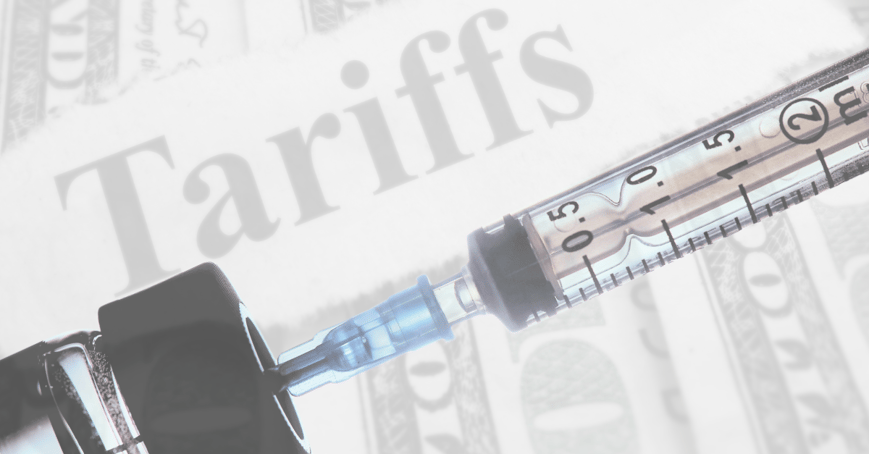You don’t need a PhD in biochemistry to work in the pharmaceutical industry. However, understanding the basics of medicine can help you better understand the market. Whether you’re doubling down on injectables or pivoting from oral and transdermal drugs, this blog will help you understand:
- What's driving market growth
- Promising opportunities for drug makers
Capitalizing on injectable solutions
According to recent market research, the pharmaceutical industry is witnessing a significant shift towards injectable solutions.

To better understand these numbers, let's dive into what started the shift and what will sustain it in the coming years.
Market growth catalysts
The injectable solutions market has experienced significant growth in recent years, with two notable catalysts being COVID-19 vaccines and Ozempic® (semaglutide) injections.
COVID-19 vaccines
While the initial surge in demand for COVID-19 vaccines has subsided, its impact on the injectable solutions market continues to resonate. The global pandemic initially sparked an unprecedented need for injectable vaccines, catalyzing massive production and distribution efforts. This accelerated advancements in mRNA technology, opening new avenues for treating various diseases. Additionally, it necessitated significant improvements in global cold chain logistics infrastructure, benefiting the entire injectable drug industry.
Semaglutide injections
Semaglutide, most commonly known by its branded name Ozempic®, has been a massive source of growth for injectable solutions. Originally developed for type 2 diabetes, Ozempic® gained immense popularity for weight loss, partly due to celebrity endorsements and social media attention. Its success as a long-term treatment for chronic conditions, coupled with user-friendly injection pens, expanded the market for injectable drugs and spurred competition.
Both COVID-19 vaccines and Ozempic® demonstrated how medical innovations, combined with high demand and effective distribution, can dramatically impact the injectable drug market. These developments not only contributed to immediate market growth but also laid the groundwork for future advancements in injectable drug technology and wider acceptance among consumers.
Long-term opportunities
Aside from the accelerated growth of COVID-19 vaccines and semaglutide injections, there are also steadily growing opportunities for drug makers in this sector.
Rise of chronic diseases
The number of people with a chronic disease, such as cancer, diabetes, cardiovascular conditions, and autoimmune disorders, is on the rise. According to a study published in the National Library of Medicine, the number of people 50 years and older with at least one chronic disease is estimated to increase by 99.5% from 71.522 million in 2020 to 142.66 million by 2050.

Injectable solutions offer targeted delivery, potency, and rapid action, making them invaluable in managing these complex, long-term conditions. For cancer patients, injectable therapies can deliver powerful drugs directly to tumor sites, while diabetics benefit from the precise control offered by injectable insulins. As these and other chronic diseases continue to affect larger portions of the population, the demand for injectable medicines is expected to rise alongside it.
Demand for low-cost generics
The demand for more affordable medications, particularly in the United States, has led to a significant increase in the market for generic drugs, creating an opportunity for pharmaceutical manufacturers.
Generic drugs offer a cost-effective alternative to brand-name medications. While profit margins are smaller, manufacturers can offset this through higher sales volumes. The lower price point of generics makes them more accessible to a broader range of patients, leading to increased demand and higher overall sales.
Moreover, the development process for generic drugs is notably faster and less complex than that of new, branded medications. Generic manufacturers can bypass the lengthy and costly clinical trials required for novel drugs, as the safety and efficacy of the active ingredients have already been established. Instead, they need only demonstrate bioequivalence to the original drug, which significantly reduces the time and resources required for bringing the product to market.
This streamlined process not only reduces development costs but also allows generic manufacturers to respond more quickly to market demands. As patents expire on popular branded drugs, generics companies can swiftly introduce alternatives, capitalizing on established markets.
Jumpstart your path to market
Regardless of the medicine you’re manufacturing, an experienced CDMO partner is essential. American Injectables understands the unique challenges and opportunities in the injectable drug market. With a bench of industry veterans, we can help you navigate the formulation, manufacturing, and regulatory requirements that come with needles and vials.
Whether you’re developing a popular injection, generic drug, or solution for a chronic disease, our team can support you from formulation through fill-finish.





No Comments